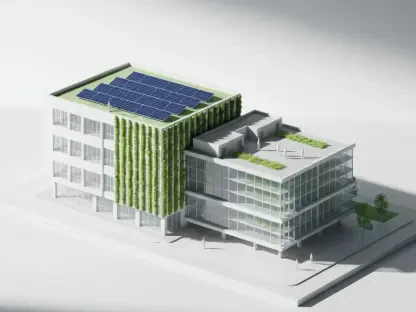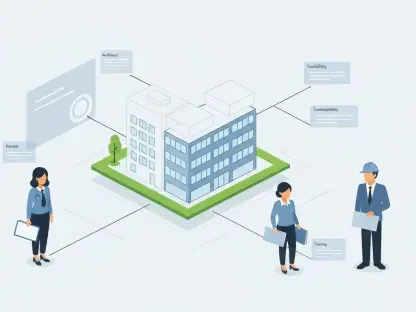The state of Michigan is currently embroiled in a contentious debate over proposed changes to energy efficiency standards for new home constructions, which seek to bolster insulation requirements and improve overall efficiency. The initiative, led by the Michigan Department of Licensing and Regulatory Affairs (LARA), aligns with broader environmental and economic goals aimed at reducing energy consumption and enhancing sustainability. While advocates believe that these updates could yield significant benefits, such as savings in energy costs and a reduction in carbon emissions, they have also ignited a legal battle with the local construction industry. This clash exemplifies a larger national discourse on how energy policies intersect with economic constraints, particularly in the realm of housing affordability.
The Push for Enhanced Energy Standards
Proponents of the revised energy code emphasize its potential to deliver substantial long-term financial savings for homeowners. LARA’s analysis suggests that homeowners in Michigan could benefit from a 10.7% reduction in energy costs, equating to around $396 annually or approximately $7,300 over a 30-year period. This reduction is not only financially beneficial but also aligns with environmental objectives, with the US Department of Energy forecasting a significant decrease in carbon dioxide emissions by 44,850 metric tons in the first year of code implementation alone. This environmental benefit extends beyond mere statistics, potentially contributing to job creation, with an expected 10,000 new positions emerging in the energy and construction sectors. This stems from increased activities in enhancing home energy efficiency and the subsequent rise in disposable income, which could, in turn, stimulate local economies.
Environmental advocacy groups laud these potential outcomes, viewing them as critical steps toward mitigating climate change impacts. They argue that transitioning to more energy-efficient homes is essential, particularly given the increasing frequency of extreme weather events attributed to global warming. As energy costs continue to rise, homeowner savings through reduced utility bills and enhanced home comfort are additional advantages of these updated standards. However, the focus on long-term benefits faces opposition from homebuilders concerned about increased initial construction costs. The debate underscores a classic tension between immediate financial constraints and prospective long-term gains, necessitating a careful evaluation of both to formulate balanced policies.
Builder Opposition and Economic Concerns
On the flip side, homebuilders in Michigan argue that the proposed energy standards could hinder efforts to build affordable housing. The Home Builders Association of Michigan and the Michigan Manufactured Housing Association have filed a lawsuit, challenging LARA’s proposal. They argue that the proposed rule changes may exacerbate already significant housing affordability issues due to the construction cost increase of approximately $5,000 per home. This cost consideration is particularly salient in the context of Michigan’s ongoing housing shortage, where producing affordable housing has become a priority. Builders argue that these additional expenses are unjustified and that LARA’s proposal could violate procedural requirements in the rulemaking process. This legal challenge now delays the implementation of new standards, further complicating the issue for policymakers advocating enhanced energy efficiency.
In this context, the builders highlight the importance of considering the broader economic implications of regulatory changes. As they contend, achieving sustainability objectives should not come at the cost of exacerbating the housing crisis. They reference the new International Energy Conservation Code (IECC) as a framework offering greater flexibility and potentially lower costs compared to the standards proposed by LARA. These industry stakeholders assert that while energy efficiency is important, it should not overshadow the immediate necessity of affordable housing, especially given Michigan’s apparent legislative inertia in implementing zoning reforms, which further restrict housing availability.
Regulatory and Housing Policy Dynamics
The complex interplay between regulatory measures, housing policies, and economic costs demands a nuanced understanding of the associated challenges and potential solutions. Experts suggest that addressing Michigan’s housing issues requires a multifaceted approach, with energy efficiency standards playing just one part in a larger puzzle. Restrictive zoning laws, which dictate large minimum lot sizes and ban apartment developments on commercially zoned land, are identified as more significant barriers to housing affordability. Such policies effectively limit the available land for development and contribute to a shortage in affordable housing options. Addressing these zoning challenges may be more impactful in alleviating the housing crisis than focusing solely on energy codes.
Additionally, state regulators and homebuilders have divergent methods for appraising cost-effectiveness, further complicating the discourse. Regulators advocate for evaluating costs and benefits over a 30-year mortgage period, suggesting this timeline offers a meaningful understanding of the cash flow implications that energy efficiency measures might bring. Builders, however, propose a “simple payback” approach, which calculates how long it would take for energy savings to offset initial costs, claiming that it might require up to nine years to break even. These fundamentally different perspectives illustrate the ongoing challenge of reconciling immediate and long-term considerations within policy frameworks.
Lessons and Pathways Forward
Advocates for Michigan’s revised energy code highlight its promise for significant long-term savings for homeowners. An analysis from LARA indicates a 10.7% reduction in energy costs for Michigan residents, translating to about $396 saved annually, or roughly $7,300 over 30 years. These financial benefits are complemented by environmental advantages; the US Department of Energy projects a notable reduction in carbon emissions, with 44,850 metric tons cut in the first year alone. Beyond the environmental impact, the new code could stimulate the economy by creating an estimated 10,000 jobs in energy and construction, driven by efforts to improve home energy efficiency and increased disposable income, which, in turn, aids local economies.
Environmental advocates see this as a crucial step in combating climate change, especially as global warming leads to more extreme weather. With rising energy costs, homeowners benefit from lower utility bills and increased comfort. However, homebuilders are concerned about higher initial costs, highlighting the tension between upfront expenses and future savings, which requires a careful policy evaluation.









